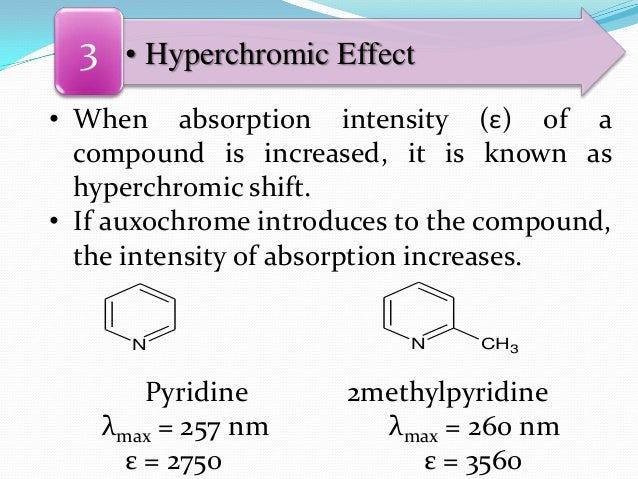Bathochromic shift (from Greek βαθύς bathys, 'deep'; and χρῶμα chrōma, 'color'; hence less common alternate spelling 'bathychromic') is a change of spectral band position in the absorption, reflectance, transmittance, or emission spectrum of a molecule to a longer wavelength (lower frequency).[1] Because the red color in the visible spectrum has a longer wavelength than most other colors, the effect is also commonly called a red shift.
- Bathochromic And Hypochromic Shifts
- Bathochromic And Hypsochromic Shift
- Bathochromic Shift And Hypsochromic Shift
Bathochromic definition: denoting or relating to a shift to a longer wavelength in the absorption spectrum of a. Meaning, pronunciation, translations and examples. The considerable bathochromic and slight hypochromic effects shown by 3-phenyl- and 3-methyl-5-phenyl-1,2,4-triazoles in the presence of alkali are similarly explained, while changes of extinction observed when N-1 is substituted by Me have been ascribed to steric effects 〈54JCS4256〉. Definition of bathochromic shift in the Definitions.net dictionary. Meaning of bathochromic shift. What does bathochromic shift mean? Information and translations of bathochromic shift in the most comprehensive dictionary definitions resource on the web. Definition of bathochromic in the Definitions.net dictionary. Meaning of bathochromic. What does bathochromic mean? Information and translations of bathochromic in the most comprehensive dictionary definitions resource on the web.
Hypsochromic shift is a change to shorter wavelength (higher frequency).
Conditions[edit]
It can occur because of a change in environmental conditions: for example, a change in solvent polarity will result in solvatochromism.[2]
A series of structurally-related molecules in a substitution series can also show a bathochromic shift. Bathochromic shift is a phenomenon seen in molecular spectra, not atomic spectra; it is thus more common to speak of the movement of the peaks in the spectrum rather than lines.
Bathochromic And Hypochromic Shifts
- where is the wavelength of the spectral peak of interest and
Bathochromic And Hypsochromic Shift
Detection[edit]
Bathochromic shift is typically demonstrated using a spectrophotometer, colorimeter, or spectroradiometer.
See also[edit]
Bathochromic Shift And Hypsochromic Shift
References[edit]

- ^Kamlet, Mortimer J.; Taft, R. W. (1976). 'The solvatochromic comparison method. I. The .beta.-scale of solvent hydrogen-bond acceptor (HBA) basicities'. Journal of the American Chemical Society. 98 (2): 377–383. doi:10.1021/ja00418a009. ISSN0002-7863.
- ^Buncel, Erwin; Rajagopal, Srinivasan (1990). 'Solvatochromism and solvent polarity scales'. Accounts of Chemical Research. 23 (7): 226–231. doi:10.1021/ar00175a004. ISSN0001-4842.
